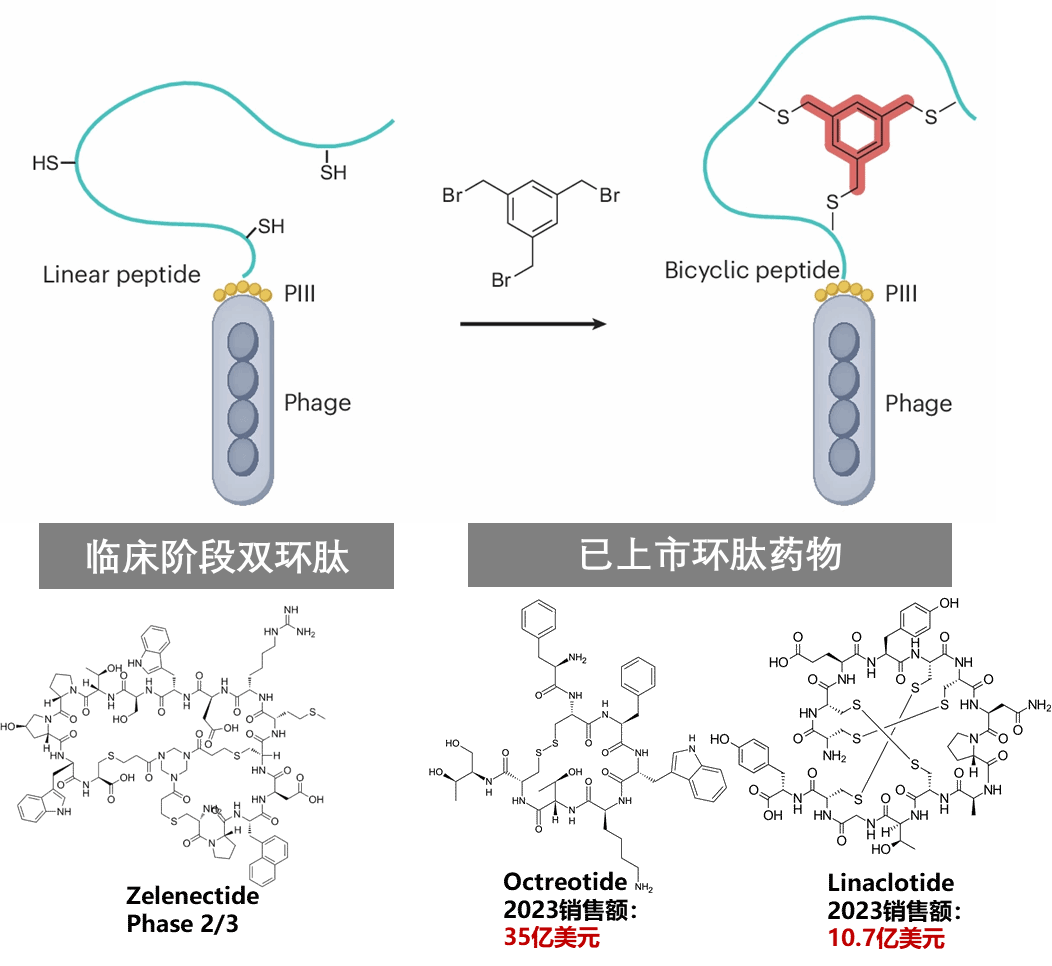搜索


On 25 December, Associate Professor Xudong Kong from the School of Life Sciences and Technology/Zhangjiang Advanced Research Institute and Professor Changlin Tian from the School of Chemistry and Chemical Engineering/Zhangjiang Advanced Research Institute at Shanghai Jiao Tong University were invited to publish a review article in Nature Chemical Biology on the progress of phage display bicyclic peptide technology. The article outlines the major developments and technical breakthroughs since the technology's inception in 2009, its potential in cyclic peptide drug discovery, and prospects for future challenges and opportunities.
In recent years, cyclic peptides have emerged as highly promising therapeutic molecules within drug discovery, bridging the gap between biopharmaceuticals and small-molecule drugs. In 2009, Heinis et al. published a seminal work in Nature Chemical Biology detailing how phage display technology could be employed to construct bicyclic peptide libraries for novel molecule screening. The team innovatively introduced chemical cross-linkers to cyclise linear peptides displayed on phage surfaces (Figure 1), thereby enabling the genetic encoding and screening of extensive chemical bicyclic peptide libraries. Today, biotechnology companies such as Bicycle Therapeutics have applied this technology to discover candidates for multiple targets, including Nectin-4, EphA2, and MT1-MMP, with these candidates now progressing into clinical trials. The drug development potential of bicyclic peptides extends beyond cancer therapeutics, offering significant application scope in infectious diseases, immune disorders, and other therapeutic areas.

Figure 1. Schematic diagram of phage display-derived bicyclic peptides and representative cyclic peptide therapeutics
Despite demonstrating considerable potential in drug development, cyclic peptides still face challenges in balancing affinity, selectivity, stability, and cellular permeability. This is particularly true for GPCR-targeting therapeutics, where purification difficulties and conformational heterogeneity complicate screening processes. Through high-quality cyclic peptide libraries, intelligent selection strategies, high-throughput screening systems, and AI technologies, breakthroughs are anticipated in the near future, propelling the advancement of cyclic peptide drug development.
Author: Kong Xudong
Contributing Unit: Centre for Innovation in Synthetic Science (Synthetic Biology Platform)






 Address:No.1308 Keyuan Road, Pudong District, Shanghai
Address:No.1308 Keyuan Road, Pudong District, Shanghai Phone:86-21-54740000
Phone:86-21-54740000 E-mail:zias@sjtu.edu.cn
E-mail:zias@sjtu.edu.cn